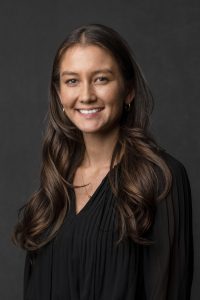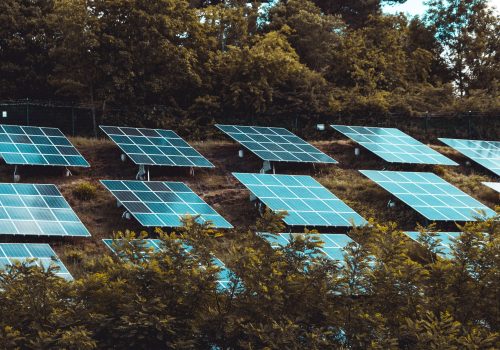This week, President Joe Biden’s administration wraps up the second leg of its cross-country Investing in America tour to spotlight cities and towns leading new clean energy infrastructure projects with federal investment. While the tour’s focus has been on national priorities, mayors, who have shown their ability to deliver on domestic investment projects, have begun exploring opportunities for international collaboration. These expanded efforts bode well for securing international partnerships to strengthen energy supply chains, particularly with allies in the Western hemisphere.
Key to these international aspirations is the US domestic agenda. Expanding access to critical minerals and increasing manufacturing capacity is essential for meeting the Biden administration’s decarbonization targets. Through legislation like the CHIPS and Science Act, the Bipartisan Infrastructure Law, and the Inflation Reduction Act (IRA), Biden has committed to increase domestic mining, processing, and manufacturing operations to boost the US middle class and build economic resilience. Federal policies have created powerful incentives for manufacturers, such as Tesla, Schneider Electric, General Motors, and Ford, to establish manufacturing facilities in North America.
City leaders have taken advantage of recent legislation to deliver economic growth to their communities. The IRA’s incentives for investments in clean energy are prompting the federal government to work closely with US cities to make manufacturing investments that can increase US energy security, reduce emissions, and support domestic manufacturing. Since the signing of the law, companies have announced 31 new battery manufacturing projects, 96 gigawatts of new clean power to add to the grid, and $210 billion of investments in the electric vehicle (EV) industry, bringing jobs and growth to US cities.
The role of mayors in the clean energy transition
The growing diplomatic power of mayors was on display at the first-ever Cities Summit of the Americas held in Denver in April 2023. The summit fostered conversations on bridging national-level support and community-led action to build robust clean energy supply chains. In Denver, mayors exchanged best practices in taking advantage of recent legislation and establishing clean energy industries. Mayor Tim Kelly of Chattanooga, Tennessee, highlighted workforce development as a central pillar of Chattanooga’s growth in low-carbon industries. Mayor Luis Colosio of Monterrey, Mexico, outlined the importance of overcoming political and regulatory obstacles to usher in major regional projects, like his city’s new Tesla Gigafactory. He also emphasized the need to incorporate community input in municipal investment strategies.
The summit signaled the administration’s new efforts recognizing cities and city-level decisionmakers as key actors for making progress toward US decarbonization and climate objectives and strengthening ties with like-minded partners across the Western hemisphere. At the summit, the US Department of State also launched a new Cities Forward initiative that aims to strengthen mayoral partnerships by matching US, Latin American, and Caribbean cities to address urban sustainability challenges. Latin America and the Caribbean have abundant mineral resources, and are important allies in the United States’ efforts to establish new clean energy supply chains for products like batteries, solar panels, and EVs. These new initiatives tap into mayors’ dual ability to connect with local constituents and forge international partnerships based on common challenges.
Strengthening partnerships with Latin America and the Caribbean
Regional mayors and officials in Latin America and the Caribbean are crucial partners for ensuring social license to operate given their unique understanding of community concerns and challenges. The region accounts for 35 percent of global production of lithium, 40 percent of copper, and 10 percent of nickel. These resources will play a crucial role in the Western hemisphere’s transition toward renewable energy and electrification and ultimately contributes to global climate objectives.
However, increased mining in Latin America could instigate regional discontent and threaten hemispheric relations if voices of local leaders are not included. In Peru, community backlash against the Chinese-owned Las Bambas copper mine halted production for four hundred days, costing the company $9.5 million per day. In Argentina, protests against a new local mining law led to its swift repeal by a provincial legislature. Local officials have the convening power to bring communities together to solicit buy-in and leverage opportunities within energy transition supply chains. Peer-to-peer exchanges between mayors like those at the Cities Summit and investment projects such as the Cities Forward initiative can mitigate these challenges by expanding opportunities for cities to reap the benefits of major mining and manufacturing projects.
While individual cities and towns are already stepping up to the plate, national governments need to provide assistance to help cities establish industries across the Americas. Municipalities need workforce development programs to meet the demand from eager investors, standards in environmental, social, and governance (ESG) to attract investment, and resource management to improve their absorptive capacity to accept new projects at scale. By providing greater coordination and resource sharing from both the bottom up and top down, the United States can make progress toward empowering cities and towns to play a role in the clean energy supply chain while benefiting from the industry’s economic growth and opportunities.
Establish technology standards with consultation from local governments
National policies can be adapted to better suit the needs of local government, but that only happens if local leaders have a seat at the table. The US Government National Standards Strategy for Critical and Emerging Technology released last May calls for new standards to define the development of renewable energy technology, yet includes no mention of perspectives from local governments. The American National Standards Institute (ANSI) should include stakeholders from mayoral and statewide offices to help shape ESG standards for the mining, manufacturing, and producing of critical minerals to ensure that future regulations are strong but not onerous. At an international level, local officials from mining communities should be included in ongoing discussions to set sustainable mining standards in the Americas alongside national governments and the mining industry.
Establish regional workforce development programs and streamline visa processes
For cities to attract investment and deliver economic benefits for local communities, a trained workforce is required. Technological advancement and increased automation reduce the number of people needed on the assembly line but increases the demand for a highly skilled workforce. For example, US semiconductor companies, buoyed by the CHIPS and Science Act, will have 300,000 unfilled vacancies for skilled engineers by 2030. Beginning with the North America Leaders Summit, the three heads of state should collaborate on establishing North American workforce training programs and streamlined visa processes to create a stronger workforce across the region.
To further promote regional training and information sharing, the Unit for City and State Diplomacy at the US Department of State should organize mayoral convenings on the sidelines of major energy conferences across the region. The Caribbean Renewable Energy Forum in Miami, International Renewable Energy Agency’s Investment Forum in Latin America, and Energy Transition North America present opportunities for mayors to hear directly about investment opportunities and share strategies for meeting industry standards.
Leverage existing subnational networks to communicate USG funding opportunities
Trusted city networks can magnify the impact of national-level initiatives. In 2022, the US Department of Energy (DOE) announced $39 million in funding for universities, national laboratories, and private sector-led projects to increase domestic supply of critical minerals. The Bipartisan Infrastructure Law appropriated over $62 billion to DOE to support a range of domestic clean energy projects, including grants targeted at local governments. By utilizing already established subnational networks like C40 Cities and The United States Conference of Mayors, the DOE, along with other US agencies, can better disseminate programs and resources available to empower city-level efforts to leverage investments and funding opportunities to power the low-carbon transition.
From local to global: Strengthening clean energy supply chains
While the United States continues to establish national and international policies to build new clean energy supply chains, cities and towns are implementing national objectives in real time. Across the hemisphere, city councils mediate tensions between communities and mining companies, subnational departments of labor enroll students in training programs, and mayors devise standards to raise the federal ESG benchmark. Local leaders will continue to play a fundamental role in driving both the standards and implementation of projects that will shape a low-carbon energy future. These efforts have been on full display during the Biden administration’s Investing in America tour.
Maia Sparkman is an assistant director at the Atlantic Council Global Energy Center
Willow Fortunoff is a former assistant director at the Atlantic Council Adrienne Arsht Latin America Center and Fulbright Research Fellow
Meet the authors
Related content
Learn more about the Global Energy Center

The Global Energy Center develops and promotes pragmatic and nonpartisan policy solutions designed to advance global energy security, enhance economic opportunity, and accelerate pathways to net-zero emissions.
Image: A river in Denver, Colorado






